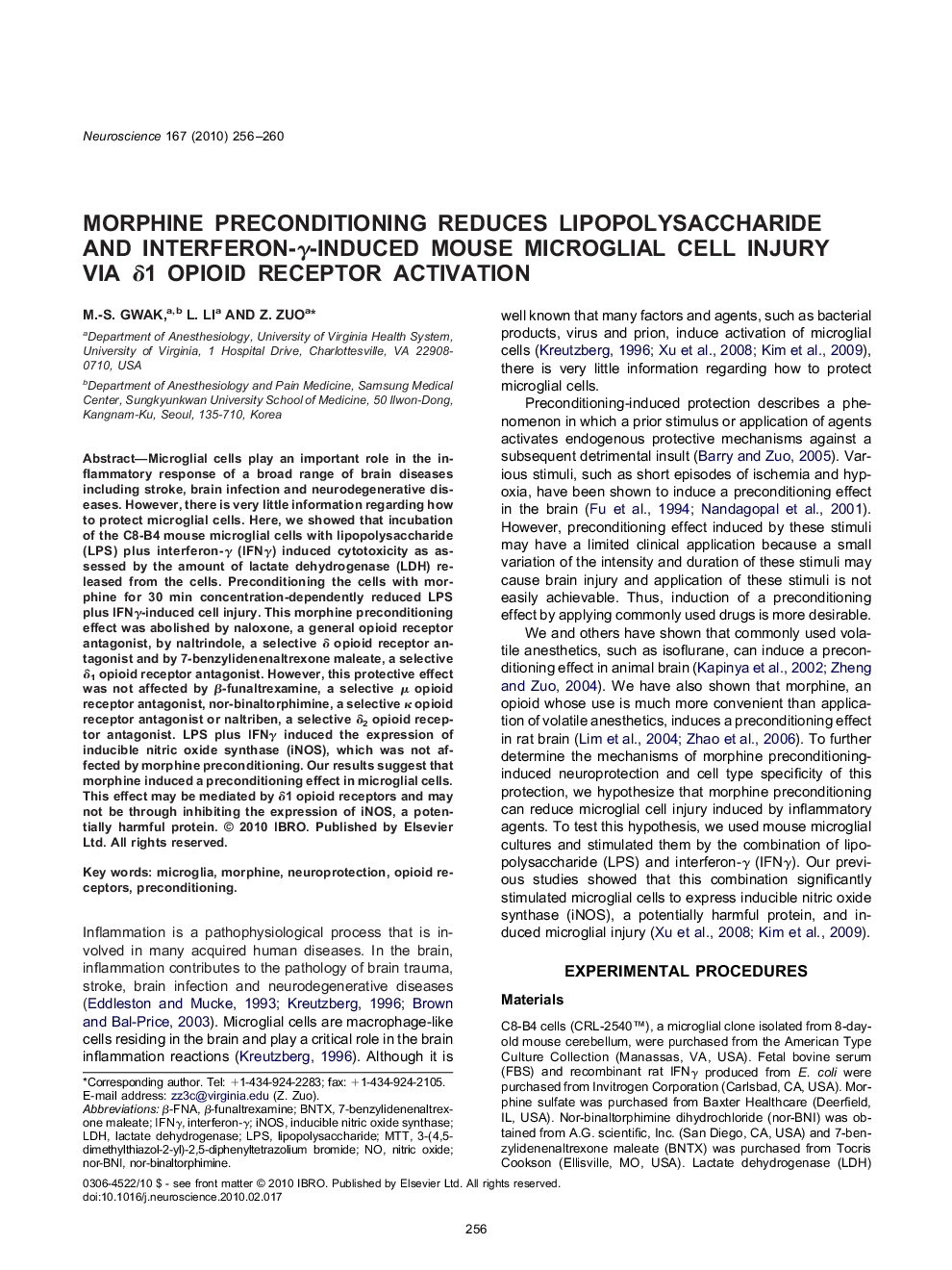| Article ID | Journal | Published Year | Pages | File Type |
|---|---|---|---|---|
| 6277607 | Neuroscience | 2010 | 5 Pages |
Abstract
Microglial cells play an important role in the inflammatory response of a broad range of brain diseases including stroke, brain infection and neurodegenerative diseases. However, there is very little information regarding how to protect microglial cells. Here, we showed that incubation of the C8-B4 mouse microglial cells with lipopolysaccharide (LPS) plus interferon-γ (IFNγ) induced cytotoxicity as assessed by the amount of lactate dehydrogenase (LDH) released from the cells. Preconditioning the cells with morphine for 30 min concentration-dependently reduced LPS plus IFNγ-induced cell injury. This morphine preconditioning effect was abolished by naloxone, a general opioid receptor antagonist, by naltrindole, a selective δ opioid receptor antagonist and by 7-benzylidenenaltrexone maleate, a selective δ1 opioid receptor antagonist. However, this protective effect was not affected by β-funaltrexamine, a selective μ opioid receptor antagonist, nor-binaltorphimine, a selective κ opioid receptor antagonist or naltriben, a selective δ2 opioid receptor antagonist. LPS plus IFNγ induced the expression of inducible nitric oxide synthase (iNOS), which was not affected by morphine preconditioning. Our results suggest that morphine induced a preconditioning effect in microglial cells. This effect may be mediated by δ1 opioid receptors and may not be through inhibiting the expression of iNOS, a potentially harmful protein.
Keywords
Related Topics
Life Sciences
Neuroscience
Neuroscience (General)
Authors
M.-S. Gwak, L. Li, Z. Zuo,
